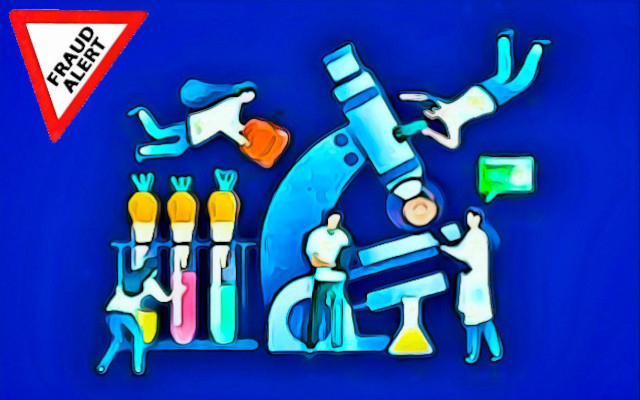Reports of food contaminated by pesticides (even those banned in the EU) and pathogens, food fraud and epidemics are increasing. The 2023 Report by ACN, Alert and Cooperation Network, summarises the outcome of prevention and control activities conducted last year in the European Union. (1)
1) ACN Report 2023, Notifications on the Rise
The ACN Report (Alert and Cooperation Network) reports on the activities carried out in 2023 by the four networks belonging to the European supervisory system:
– RASFF (Rapid Alert System for Food and Feed) records an increase in alerts and notifications on possible food safety risks related to food, feed, materials and objects in contact with food. +8%, compared to 2022
– AAC (Administrative Assistance and Cooperation Network), the network of authorities involved in monitoring non-conformities that do not represent risks to human health, reports a significant increase in reports, +24%
– FFN (Agri-Food Fraud Network), the coordination that is activated in case of fraudulent or deceptive practices towards consumers, marks the most marked increase, +26%
– PHN (Plant Health Network), the new network that monitors shipments of a range of non-compliant goods (live plants, seeds, fruits, vegetables, flowers, leaves, wood) in order to activate common emergency plans relating to plant pests, records 128 notifications.
The four networks are integrated into a system that allows the information to be cross-referenced and thus identify, for example, a fraud reported as a simple non-compliance. The EU members and the other EFTA countries (European Food Trade Agreement. Norway, Iceland, Switzerland and Liechtenstein) participate. In addition to the European Food Safety Authority (EFSA), the EFTA and the European Commission.
2) RASFF, geography of notifications
The most active country Germany (592 notifications) is the country with the highest number of notifications to the European alert network, followed closely by the Netherlands (589).
France climbs the rankings and places itself in third place (421 notifications), after having increased its activity by 50% compared to 2022 (the year of the Buitoni-Nestlé pizza scandal with Escherichia coli, which killed two children and made many others seriously ill). (2)
Italy closes the quartet (411 notifications) and leads with Germany for follow-up activities.
The countries of origin of the reported foods, are mainly Poland (304 notifications), the Netherlands (289) and France (269), among the RASFF members. Turkey (408 notifications), China (333) and India (303) are the most important, among the non-RASFF members.
3) Fruits and vegetables at the top of the black list
More than a third of the notifications RASFF is once again about ‘border pushbacks’, i.e. goods not cleared through customs in the EU.
The most reported hazard categories in food are contamination by pesticides, pathogenic microorganisms and mycotoxins.
3.1) Pesticides from Türkiye
Pesticide residues (936 notifications) prohibited, i.e. in quantities exceeding the limits permitted in the EU, are reported above all in fruit and vegetables (560 cases, of which 372 stopped at the borders) arriving from Turkey (168), followed by Egypt and India.
The most reported molecules are:
– chlorpyrifos (299, +19,1% compared to 2022). This insecticide is banned in the EU because it is neurotoxic, highly dangerous for children. However, it continues to circulate in the EU through extra-EU imports and through ‘temporary derogations’ such as the one foreseen in Italy in 2021, already reported on this site; (3)
– acetamiprid (75), a neonecotinoid;
– ethylene oxide (67 notifications, together with 2-chloroethanol), a disinfectant fumigant banned in the EU and included by IARC (WHO) in the Group I substances (carcinogenic to humans; (4)
– 2-chloroethanol (67 notifications, together with ethylene oxide), a substance into which ethylene oxide degrades. According to an opinion of BfR, the German agency for risk assessment, there are strong suspicions of genotoxicity. EFSA does not consider these suspicions to be sufficiently demonstrated. (5)
3.2) Pathogenic microorganisms
Pathogenic microorganisms are the second most common category of danger (856 notifications). The most involved foods are:
– poultry meat and poultry meat products (316) and
– nuts and nut and seed products (93).
Salmonella is still the most widespread pathogenic microorganism (582 notifications, 65% of the total). Following Listeria monocytogenes (131) Escherichia coli (50) and norovirus (50), all mainly in animal products.
As many as 153 Salmonella contamination notifications concerns poultry meat and poultry meat products from Poland.
3.3) Mycotoxins
Mycotoxins are the third most recurring danger category with 401 notifications, -17% compared to 2022. (6)
The notifications mainly concern:
– aflatoxins, highly toxic, 331 cases, mainly on
– nuts and nut and seed products (226 cases)
– originating from the United States (85 cases).
3.4) Fraud and adulteration
The adulteration/fraud category covers only certain risks (e.g. incorrect or missing health certificates and analytical reports, attempted illegal importation, etc.).
Fraudulent cases are treated by the appropriate network, as we will see.
3.5) Novel food, CBD above all
Novel foods are in fifth place among the most reported risk categories. In this area, the presence of cannabinoids in foods appears in 128 notifications, two thirds of which are related to CBD.
Cannabidiol (CBD) extracted from Cannabis Sativa L. is not a psychotropic substance, as clarified by the EU Court of Justice in 2020. And yet it is considered a ‘novel food’, still awaiting authorization with dozens of applications being examined by EFSA. (7)
3.6) Allergens, underestimated killers
Allergens undeclared (217 notifications) mainly concern ready meals and snacks (41 notifications). The presence and/or contamination by milk and dairy products is the most reported circumstance (39 cases).
Unlike of toxic pesticide residues, a food contaminated by an undeclared allergen can kill in a few minutes. Despite this, vigilance in Europe is still poor, especially on non-prepackaged foods and foods supplied by restaurants, cafes, food delivery. Waiting among other things for a uniform approach for the assessment and management of accidental contamination risks.
4) Foodborne outbreaks, 48 notifications in 2023
The epidemics of food origin appear in 48 notifications to the RASFF, 18 of which extended to multiple countries.
Among the causes, Norovirus in 17 cases, Salmonella in 11, Listeria monocytogenes in 5, histamine poisoning in 2, and Escherichia coli in 2.
Salmonella in kebab has raged across Europe in late 2023. Triggered by a notification from Austria, the case has led to nine hospitalizations in three countries and one death in Austria.
Notifications on kebabs were 61 in 2023, between microbial contamination and fraud on the origin of meat (including horse meat). 71% of these products come from Poland, 11% from Germany and 3% from Italy, France, Denmark and the Czech Republic respectively.
5) Feed, salmonella in first place
The most reported dangers in the 303 RASFF notifications relating to feed are
– salmonella (111 cases)
– moulds, with recurring notifications from Poland on batches of sunflower meal from Ukraine (20) and from Portugal on wheat bran from Angola (13 notifications)
– Enterobacteriaceae (15), in 8 cases in dog chews.
Among other dangers of the feed, emerge:
– 11 notifications for too high ambrosia seed content (Ambrosia spp.). This invasive and widespread plant causes allergies in humans and can sensitize to other allergens
– 23 notifications for the presence of mycotoxins, in 21 cases aflatoxins (21).
– 19 notifications for pesticide residues, mainly chlormequat (4) and chlorpyrifos (4)
– 16 notifications for metal residues, in 9 cases lead (4 in dog food).
6) Materials in contact with food
Dishes, utensils and other food contact materials recorded 193 notifications for over a third (36%) related to the migration of toxic substances such as primary aromatic amines, formaldehyde and lead.
Most of the reported products (124) came from China.
7) Agri-Food Fraud Network
The network dedicated to food fraud cases collected 758 notifications, +26,3% on 2022. It is surprising that only since 2022, in relations with non-EU countries involved in alerts, the European Commission has replaced ‘official letters’ with direct communications via the iRASFF network.
Suspicious goods of food frauds come mainly from:
– France (falsification of live animal documents) and Netherlands (adulteration of poultry products and false labelling of meat products) in the EU (8,2% of cases)
– China (5,4%) and Turkey (3,4%, mainly due to suspected honey adulterations) among non-EU countries.
The most reported foods are:
– meat and meat products other than poultry (13,3%), with substitution of ingredients or species and misleading labelling;
– royal jelly and honey (9%) by dilution with sugar syrups;
– fats and oils (+8,7%) especially for olive oil sold as extra virgin olive oil;
– dietetic foods, food supplements and fortified foods (7,8%) due to the addition of unapproved substances and the unauthorised use of health claims;
– fish and related products (6,9%) due to substitution with lower value species or undeclared addition of water. Countries of origin Spain (13,1%), France (10%), Netherlands (7,6%), Ecuador (6,9%) and Italy (5,3%). These practices were also reported for poultry meat and poultry meat products (5,8%);
– trafficking of illegal plant protection products in the EU (6,1%);
– milk and dairy products (5,5%). More than half of the reports come from Cyprus and Greece, for violations of the rules protecting Protected Designations of Origin (PDO), Protected Geographical Indications (PGI) and Traditional Specialities Guaranteed (TSG).
8) Illegal trafficking of dogs and cats
A chapter apart managed by the European anti-fraud network concerns the illegal trafficking of dogs and cats, with documents (including health documents) counterfeited in order to avoid taxation. The reports are more than half of the total, 414 cases.
The origin of animals is:
– Romania, Hungary, Poland and Bulgaria in the EU
– Belarus/Russia, Ukraine, Serbia and Türkiye, among non-EU countries.
9) Trafficking of plants and parasites
The network for phytosanitary safety records 128 notifications for 2023, the year of debut. Ficus and citrus plants are the most involved.
In ACN’s 2023 report there are highlighted:
– pests (75 reports), including insects, viruses, nematodes, fungi and bacteria. They can cause various damages, such as reduced crop yields, necrosis, rot or death of plants;
– non-compliant plant passports (24 cases);
– lack of ISPM (International Standards for Phytosanitary Measures) markings, 14 cases, on wooden packaging material, which when coming from non-EU countries and Portugal must bear a specific marking for entry, again for the purpose of protection from parasites.
Marta Strinati
Footnotes
(1) 2023 Annual Report Alert and Cooperation Network. European Commission https://food.ec.europa.eu/document/download/911d49f2-b3ef-4752-8ea3-5f20dbbe9945_en?filename=acn_annual-report_2023.pdf
(2) Marta Strinati. Pizza Fraîch’Up, the Nestlé Buitoni factory was a time bomb. GIFT (Great Italian Food Trade).
(3) Dario Dongo, Marta Strinati. Chlorpyrifos, the pesticide that damages children’s brains. Class action in the USA, exemptions in Italy. GIFT (Great Italian Food Trade).
(4) Dario Dongo. Ethylene oxide in food additives, tolerance uncertain in the EU. GIFT (Great Italian Food Trade).
(5) EFSA. Statement on the BfR opinion regarding the toxicity of 2‐chloroethanol. 25.2.22 https://www.efsa.europa.eu/it/efsajournal/pub/7147
(6) Marta Strinati. Mycotoxins, interview with Carlo Brera, ISS expert. GIFT (Great Italian Food Trade).
(7) Dario Dongo. Natural CBD, the EU Court of Justice declares unjustified prohibitions illegitimate. New horizons. GIFT (Great Italian Food Trade).
Professional journalist since January 1995, he has worked for newspapers (Il Messaggero, Paese Sera, La Stampa) and periodicals (NumeroUno, Il Salvagente). She is the author of journalistic surveys on food, she has published the book "Reading labels to know what we eat".




